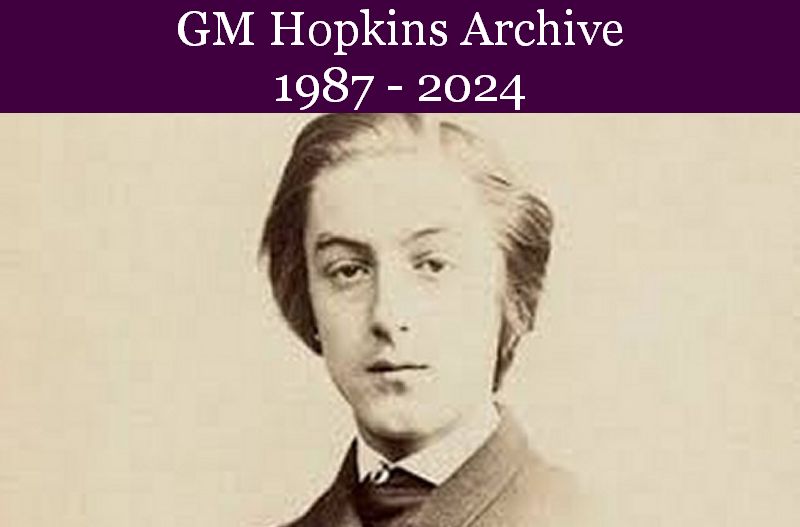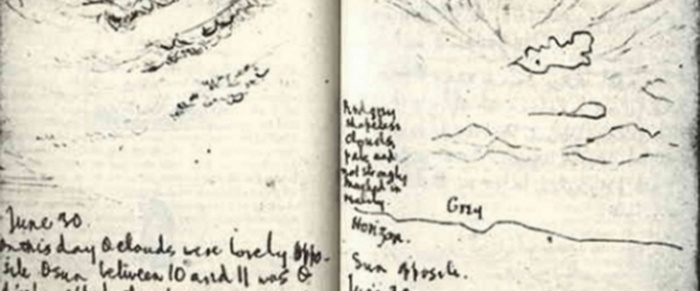Hopkins Studies in Japan
Kansai Hopkins Society in Japan,Past and Present
We were honoured to have Professor Yamada at our Hopkins Festival 2015
Professor Yasuhiro Yamada,
Japan Representative of Hopkins Society of Japan,
Kansai Nanzan University
Nagoya, Branch
It is a great pleasure to be able to get an opportunity to speak here at the 2015 Gerard Manley Hopkins Festival. The topic of to-day's talk is the past and the present of
The
Kansai Hopkins group in Japan. I would be glad if I could give you a talk that draws your interest.
Kansai Hopkins Group was Founded In 1971,
Two groups of scholars in Japan, one in Tokyo and the other in Kyoto, founded an academic circle separately to study the poetry of Gerard Manley Hopkins. Then after some talks, the two groups agreed at the end of that year to organize The Hopkins Society of Japan, which consists of two branches: The Tokyo Branch and The Kansai Branch. In this way, The Hopkins Society of Japan was organized in December, 1971, and therefore, each branch has a history of 44 years. Each branch still has its own members and still does academic activities in its own way. Though the two groups hold a joint general meeting once a year, each group holds regular meetings separately.
Location
As the name The Kansai Branch indicates, our organization is based in Kansai, the region lying in the southern-central region of Japan’s main land Honshu. The urban area of The Kansai region including Osaka, Kyoto, and Kobe is the second most populated in Japan after the Greater Tokyo Area, and like the Tokyo area, this area has a large number of institutions of higher education. The founding members of The Kansai Branch were mainly university professors who specialized in English poetry. Not all of them specialized in Hopkins, but all were keenly interested in his poetry. Half of the active members today live in the Kansai region, but the rest live outside Kansai including Tokyo, Nagoya and Okayama.
Hopkins Research in Kansai
In Japan not much was written about Hopkins until the end of the 1960’s. Then came the publication of Studies in G.M. Hopkins by Dr. Shoichiro Yasuda in 1969. This is a monumental work in the history of Hopkins research in Japan. And two years after the publication, as I already mentioned, the two groups to study Hopkins were founded in Tokyo and Kyoto.
Dr. Yasuda was one of the leading figures in founding the Kansai group. About 20 people got together to organize The Kansai Hopkins group. After the foundation of The Hopkins Society of Japan in 1971, the number of monographs on Hopkins began to increase in Japan, and much was talked about Hopkins in academic communities like ours. Now that 44 years have passed since the foundation, nearly all the founding members have withdrawn from our group because of aging or death. The membership in its prime amounted altogether to 6, but presently just a dozen of people actively take part in our academic activities. It is very difficult to enlarge the membership these days, because the number of Japanese students who choose to study English literature, especially English poetry, is much smaller than a few decades ago. Nevertheless, we, the members today, believe in the need for this academic group in our academic life, and all our members, I believe, hope to continue the membership as long as we can.
Regular Meetings
We have a regular meeting every month except May and July in a year. So far 411 meetings were regularly held at a university or some public facilities mostly in Kyoto. At a regular meeting, a person in charge is supposed to distribute to other persons present a copy of a Japanese translation of a Hopkins poem with one or two handouts attached, and provide explication. After that, we discuss the translation and the original poem fully. A meeting lasts three hours. Usually we need more than one meeting to discuss one poem. So far we discussed the translations of all the pieces of verse except the ones in the part of Translations, Latin and Welsh Poems in the fourth edition of The Poems of Gerard Manley Hopkins. Our members translated even the unfinished poems and fragments. Moreover, we translated Hopkins’s journals and discussed the translations.
The Joint General Meeting
The Hopkins Society of Japan as a whole holds a general meeting once a year. Two persons, one from the Tokyo Branch and the other from the Kansai Branch, give a presentation of the result of their research. Afterward, information about the academic activities of each branch is exchanged. So far 43 general meetings were held.
NONDUM
We publish a journal entitled NONDUM about every three years. The first issue was published in May 1974, three years after the foundation of our organization. We have 13 issues published so far. This Journal contains monographs on Hopkins, translations of his poems and journals, records of the past meetings, and so on. The latest issue was published in February 2014, in celebration of Dr. Yasuda’s 100th birthday. You will see that the title of our journal is taken from one of Hopkins early poems. The Latin word “Nondum” means ‘not yet’ in English. The title of the journal suggests our determination that we will continue our research in the poetry of G.M. Hopkins because we will not be able to attain our academic goal easily. Hopkins-no-kokoro, a book of 450 pages on Hopkins, was published in 1979. It is a collection of the papers by the members of Kansai Branch at that time.
Long-lasting membership In spite of the small membership, nearly all the members today attend the regular meeting without fail. Most of the members today have been active for many years. For instance, two persons have been an active member for more than 40 years. I myself have been one for 32 years. I need to take a bullet train from Nagoya to Kyoto to reach the place for the regular meeting and it takes me about two hours to go from my home to the meeting place. What drives me to attend the meeting? I love our regular meetings because they give us opportunities to read a great deal of Hopkins works, exchange our opinions frankly, and get inspiration from the discussion for the sake of our own research. An opinion from another member might serve as the answer to an old question of mine. There is a very frank atmosphere in our meetings. I love it, and so do the other members of our group, I believe. This atmosphere was created by the founding members of our group, and it is what we have succeeded to for a very long time in the activities of Kansai Branch. I am 65 years old now, and will retire from a university in a few years. I will be among senior citizens quite soon. Yet, I am much younger compared to Dr. Yasuda, who is 101 years old now and so I would like to continue studying the poetry of Hopkins even after retirement.
Gerard Manley Hopkins - a Japanese Perspective (Kazuyoshi Enozawa Keio University)
Lectures from Hopkins Festival 2015
Professor Yasuhiro Yamada, Japan Representative of Hopkins Society of Japan on Hopkins in Japan
Explore Lance Pierson's exploration of St Winifred's Well here
Explore Hopkins Poet, Priest and Preacher here
Read about anxiety in Hopkins's Landscape Poetry
Read James Mackey on Jesus of Nazareth, Prophet Betrayed ...


